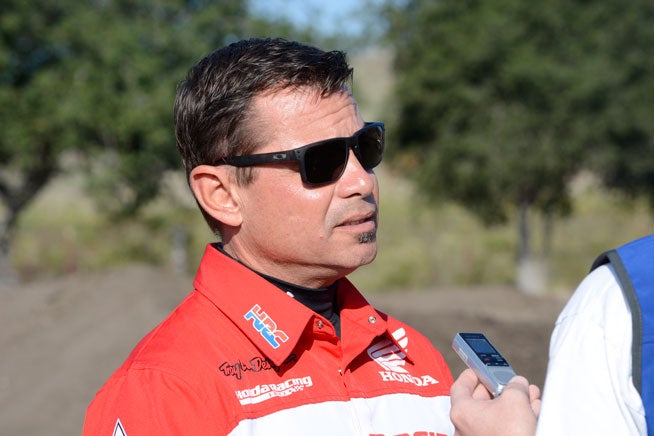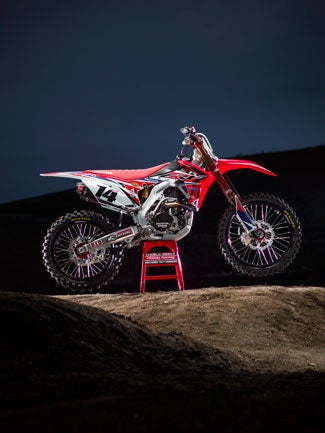Team Honda Motocross Manager Dan Betley sends a clear and positive message of performance.

Dan Betley can remember when he never wanted to see another motorcycle again.
The Team Honda Motocross Manager had come on board with Honda to wrench for Jeff Stanton in 1989, and the two instantly achieved success, with Stanton earning the AMA Supercross and AMA 250cc National Motocross titles that season. Betley would go on to tune Stanton to a total of six AMA National titles. Then, in 1994, Betley walked away from the sport.
“I quit, I moved to Idaho and thought that I was done with the motorcycle industry,” Betley says.
That hiatus lasted all of one year. Today, Betley is Team Honda’s Motocross Manager, and he is tasked with returning the championship luster to a program that has experienced its longest championship dry spell in the history of its U.S. factory racing program—at least at the premier level.
Here’s a little perspective: It took Honda nine years to win its first AMA Supercross Championship with Donnie Hansen in 1982. After that, the winged brand practically had a lock on the stadium number one plate, with Team Honda riders winning it 16 times over the next 22 years. It was much the same outdoors in the 250cc/450cc ranks. After hiring 1972 AMA 250cc National Champion Gary Jones and winning its first AMA motocross title in 1973, Honda had never gone more than eight years without an outdoor title. But lot of water has passed under the good ship Honda’s keel since the glory days of Ricky Carmichael, and now the factory wants to reset its course back to Titletown.
Betley is the man at the helm. Returning to Team Honda in 1997, he gradually ascended through the ranks, landing the position of Team Manager in 2013, right at a time when the factory squad was struggling to post consistent results. Betley jokes that he isn’t sure whether to be grateful for the opportunity or careful about what he has wished for all along.
“Maybe it’s both,” he says with a laugh.
But Betley and Team Honda are being fueled by hope, optimism, and a new attitude by Honda in Japan, which is providing levels of support to the U.S. supercross/motocross effort that surprisingly, has been missing for several seasons. The U.S. Team Honda squad is once again receiving full backing from HRC, and its importance cannot be underscored.
“When I started, in 1989, HRC was a big part of the race team, but they started to slowly transition out during the 1990s,” Betley says. “As we got into the 2000s we were becoming more self-sufficient with the team, as HRC became more and more focused on MotoGP. A lot of the financing went in that direction, so each [motocross] team—world GP and American motocross and supercross—began working on its own development, going forward. Well, it’s no secret that we have been lacking in wins since Ricky Carmichael left, and I think everybody has finally just realized we’re tired of losing. It is time to get this program back together and, hopefully, wake the sleeping giant.”
The HRC relationship is so much more than just a parts connection—the team already had that—it is full and immediate engineering support from the factory’s brightest racing minds.

It couldn’t come at a better time, as the level competition in the U.S. has continued to rise to the point that it mimics the sport’s turbulent days in the 1970s and 80s, long before riders such as McGrath, Carmichael and Stewart began to dominate it via multiple wins and perfect seasons. In recent years, supercross and motocross fans have enjoyed seasons where multiple riders have a legitimate chance at winning each week. That hasn’t happened since the 1980s, when Honda was the dominant force that it aspires to be again. The main difference between the two eras is that, with the ever-rising costs associated with race budgets and rider salaries, fielding a five-rider team for supercross, as Honda did in the 1980s, isn’t practical.
 Your Privacy Choices
Your Privacy Choices